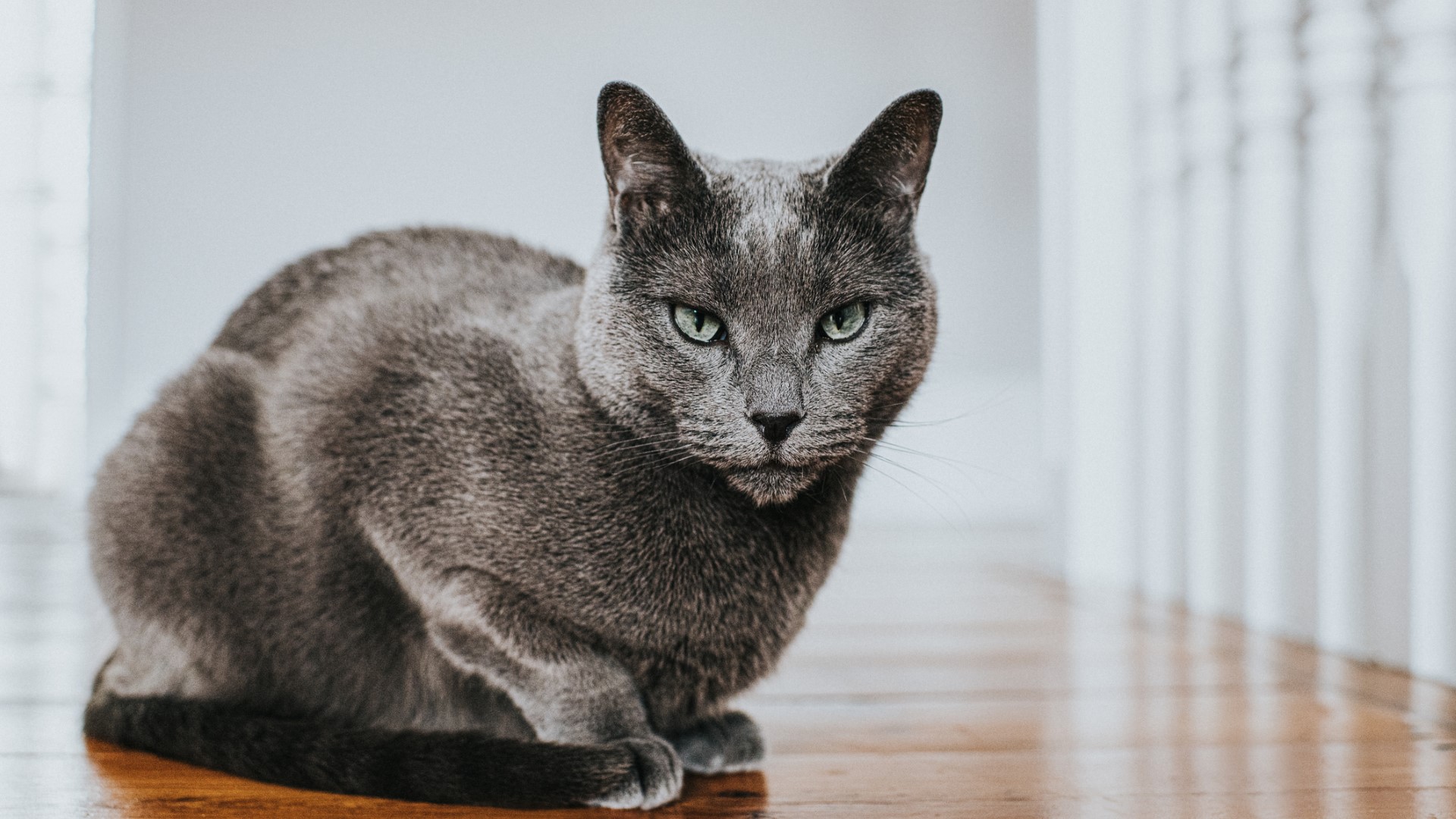
Beloved for their intelligence, sweet temperament, and low-key energy, the Russian blue cat is a wonderful feline companion for those seeking a gentle, relatively independent, and quiet kitty.
With their blue-silver coats and elegant build, the Russian blue is a striking breed. Somewhat aloof and cautious, this breed is best suited for households without high-energy kiddos or pets. This doesn't mean that they won't enjoy some of the best cat toys though to have around.
In this guide, we'll delve into everything you need to know about Russian blue cats, including their personality, breed standards, health conditions, enrichment needs, and more. Read on to learn all about this beautiful breed.
32 things to know about Russian blue cats
1. Their name comes from their stunning blue coat
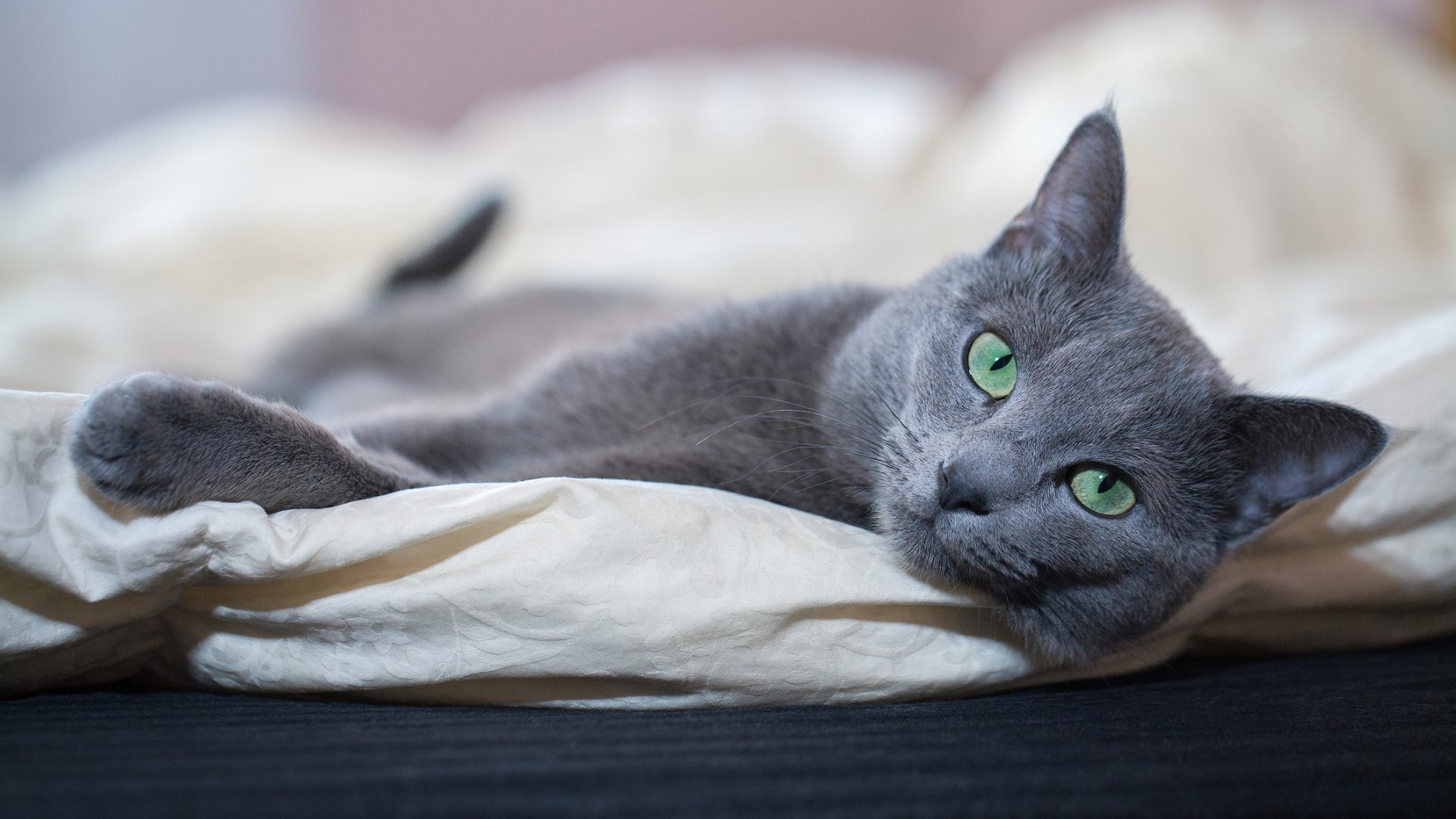
When including what to know about Russian blue cats, we of course have to mention their stunning blue coat. It typically has silvery hues that give this breed an elegant and striking appearance. According to the Cat Fanciers' Association, the Russian blue cat's coat should have light shades of blue evenly distributed throughout. The longer, protective top layer of hair on this breed (guard hair) should be silver-tipped, giving the Russian blue a "silvery sheen or lustrous appearance".
2. Russian blue likely originated from Russia
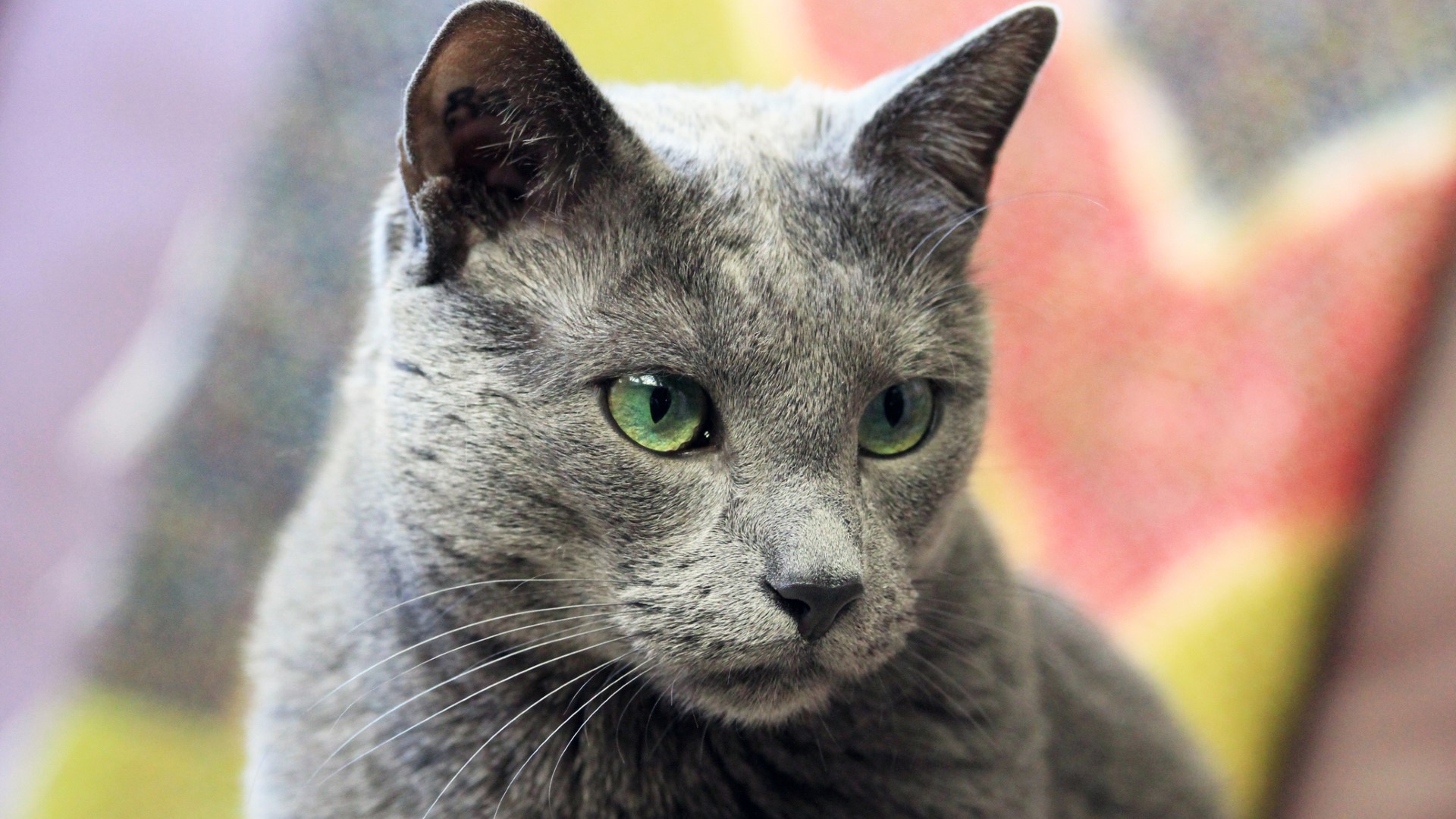
As you may have guessed, the Russian blue likely originated from Russia. Specifically, breed historians believe this lovely breed emerged in the bustling port city of Arkhangelsk (aka Archangel Island), located off Northern Russia's coast. They are a naturally occurring breed, so we don't have a specific date on their breed origin.
However, some speculate they may be descendants of companion cats kept by Russian czars. Sailors traveling from the port of Arkhangelsk likely began keeping these cats as ship companions in the 1860s, and by the 1880s, Russian blues were appearing in breed shows in the UK.
3. Russian blues have a thick, double-layered coat
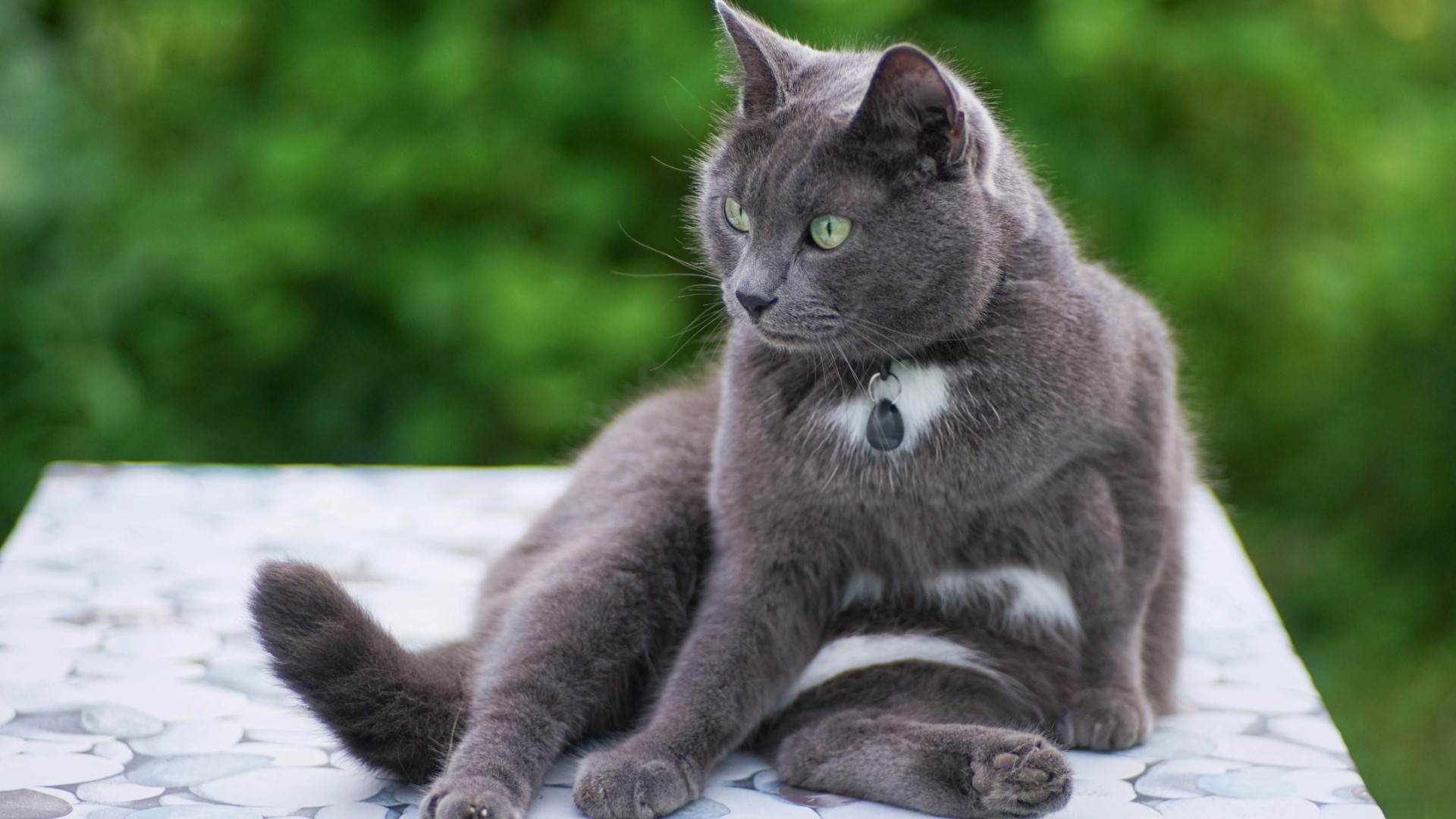
Emerging in the Arctic regions of Northern Russia, the Russian blue cat is equipped with a short, but dense double-layered coat. This coat structure allows them to thrive in colder regions. So, if you're looking for one of the best cat breeds for cold climates the Russian blue may just be the one.
The undercoat of the Russian blue is soft and fine, while the silver-tipped outer layer is dense and plush. The silver-tipped outer layer of the coat gives this breed a shimmery appearance. This is especially true when you use one of the best cat brushes once a week to keep their coat lustrous and healthy.
4. Their nickname is the Archangel cat
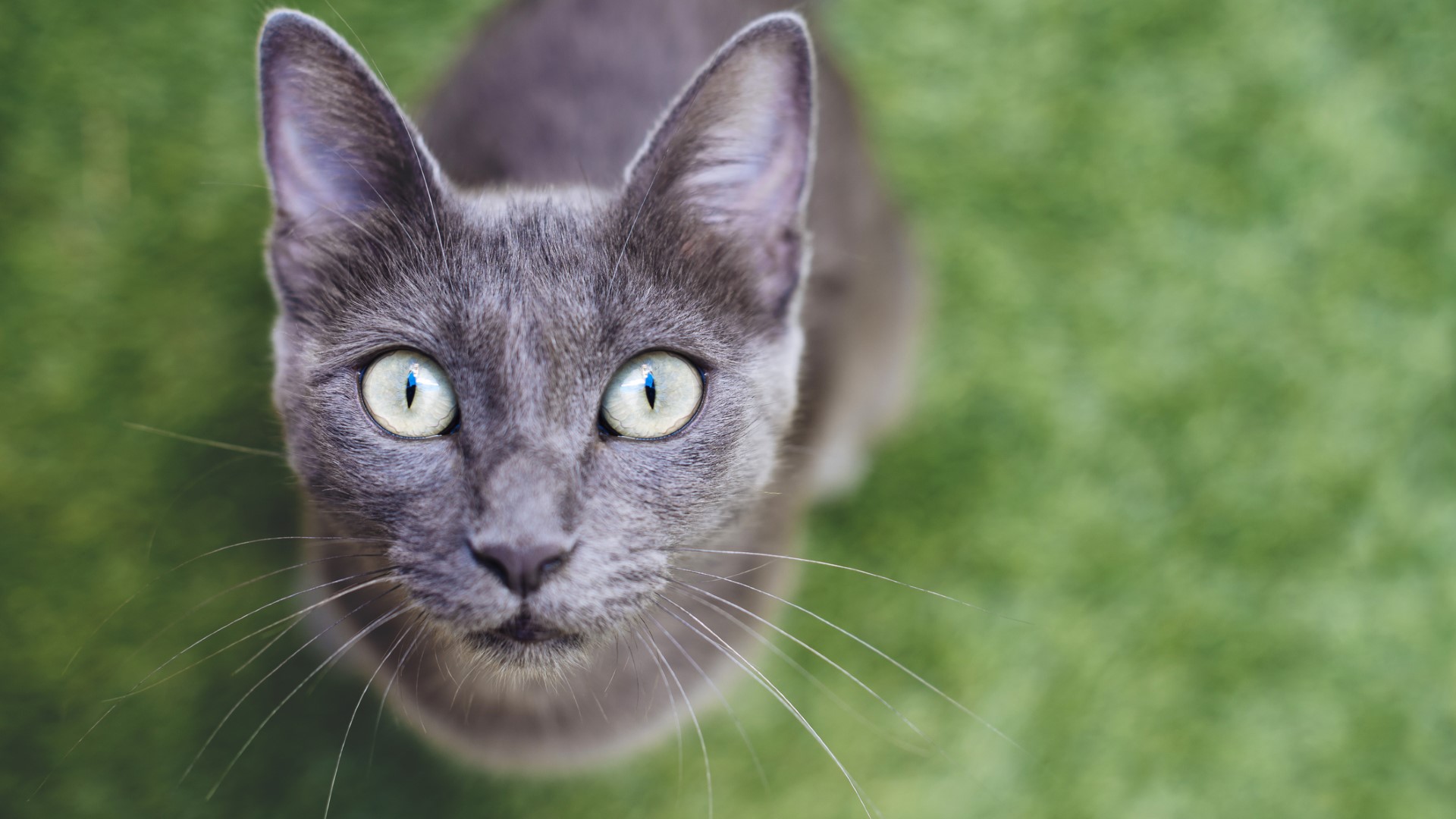
While most folks know this breed as the Russian blue, they're also known as the Archangel cat or the Archangel blue. This name refers to their likely place of origin in Russia, Arkhangelsk, which translates into "Archangel" in English.
When the Russian blue cat first appeared in England's prestigious National Cat Club's show at the Crystal Palace in 1875, they were actually labeled as the Archangel cat.
5. The breed almost became extinct in Europe due to World War II

The population of many cat breeds suffered during and in the aftermath of World War II, as breeders overwhelmingly lacked the resources to produce pedigree litters. Russian blues were particularly affected by this climate of scarcity. However, a small group of breeders were able to preserve much of the core traits of the Russian blue by breeding them with Siamese and British blue cats.
Carefully, over time, these breeders were able to select the cats with the most Russian blue traits to bring the breed back to its original character. During this time, the breed became known more and more as the Russian blue, rather than the Archangel cat.
6. Russian blues have a life span of 15-20 years
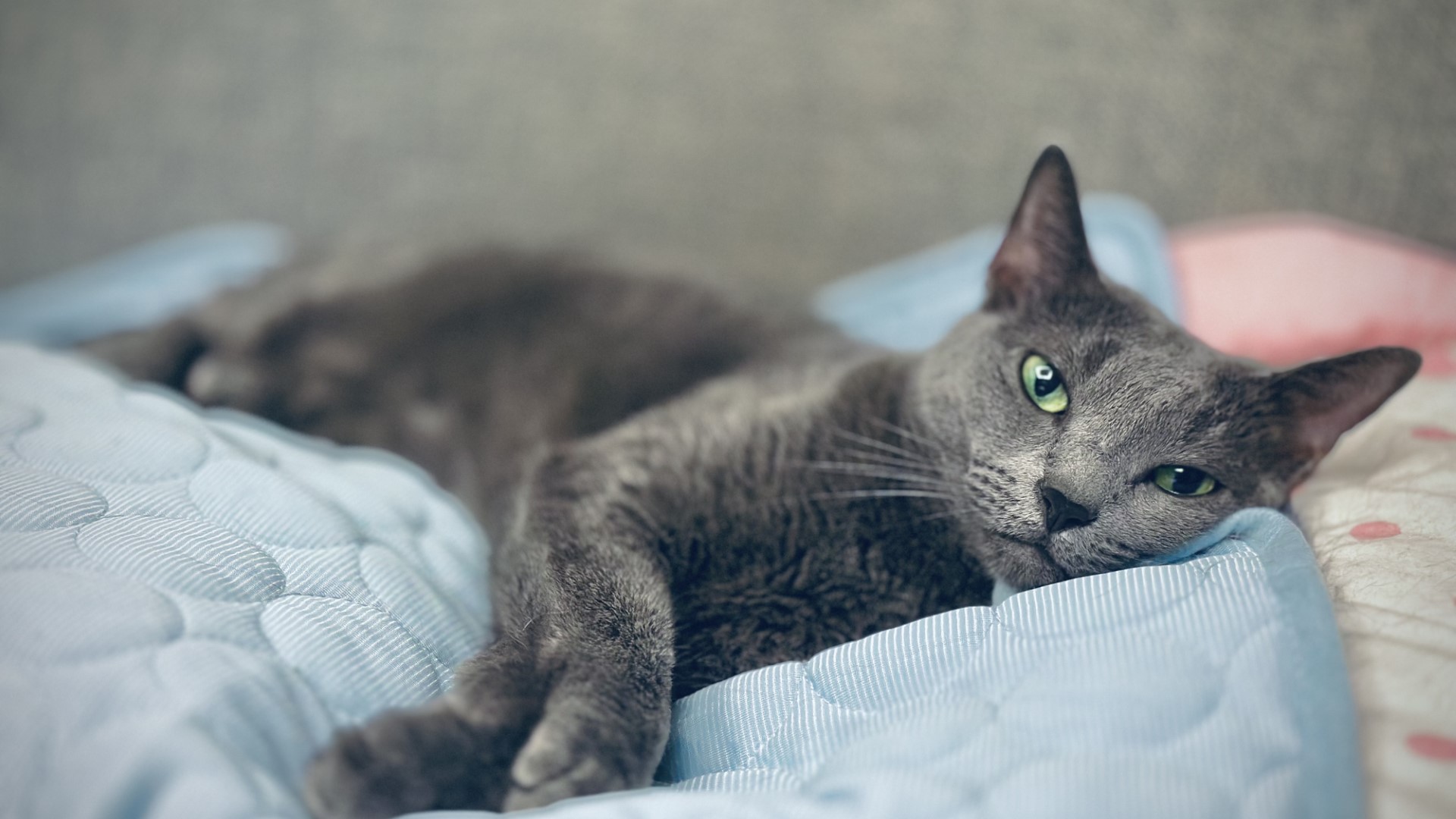
A naturally occurring, generally healthy breed, the Russian blue cat's lifespan is typically 15-20 years. These hardy cats are known for their longevity and for maintaining spryness into their senior years.
To help your Russian blue cat live a long, happy, and healthy life, make sure to check out some of the best pet insurance on the market. Providing your feline companion with a balanced and nutritious diet with some of the best cat food will also help keep your Russian blue kitty in tip-top shape.
7. Russian blues are lean and muscular
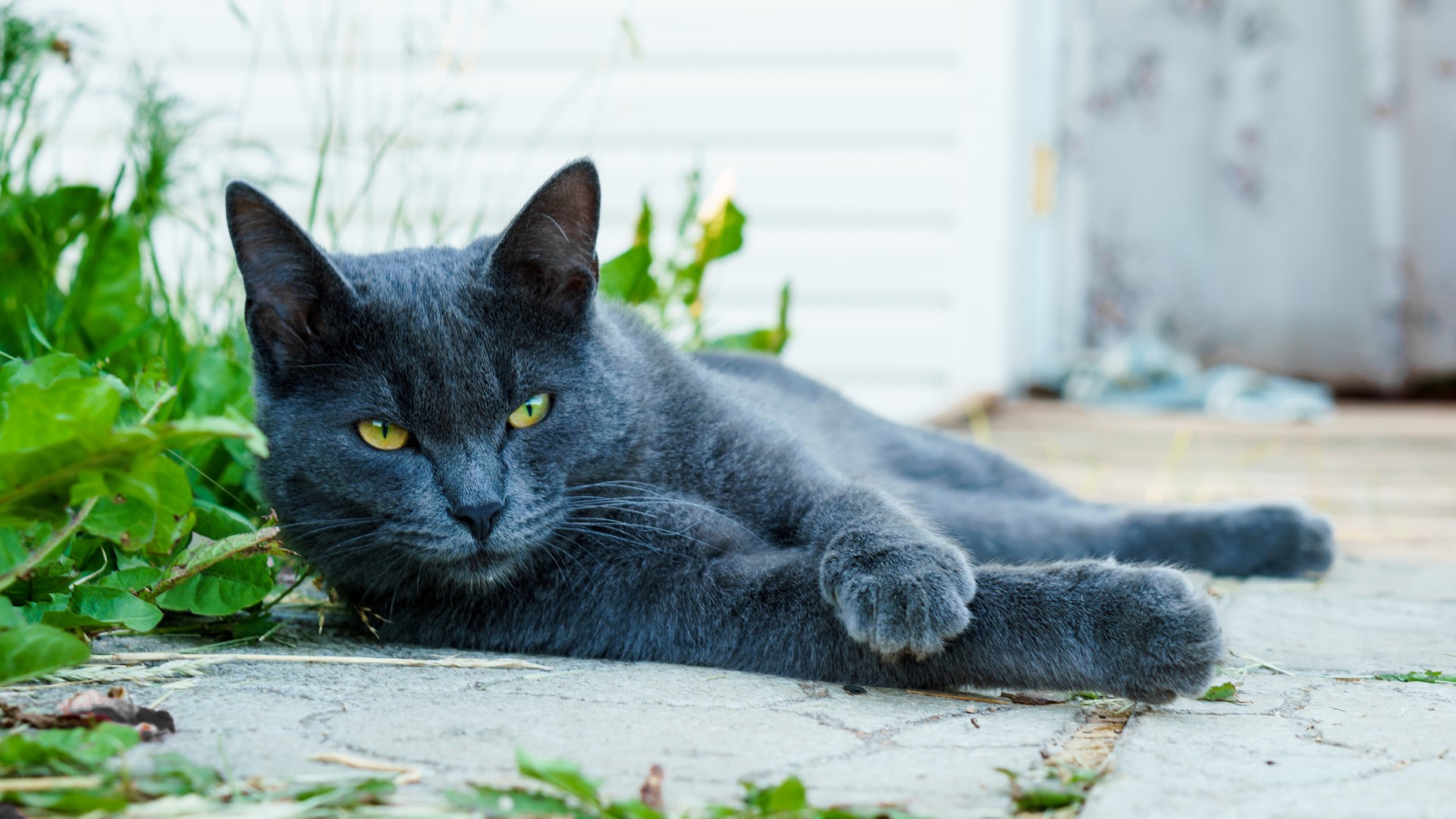
While these kitties may appear bulky with their thick double coat, Russian blues are lean and fine-boned, albeit muscular. With their lean but muscular build, these cats are both powerful and agile.
Their movements appear graceful and effortless. These elegant kitties love to climb, so make sure to stock up on some of the best cat trees and watch them show off their moves!
8. Most Russian blue cats have stunning emerald green eyes
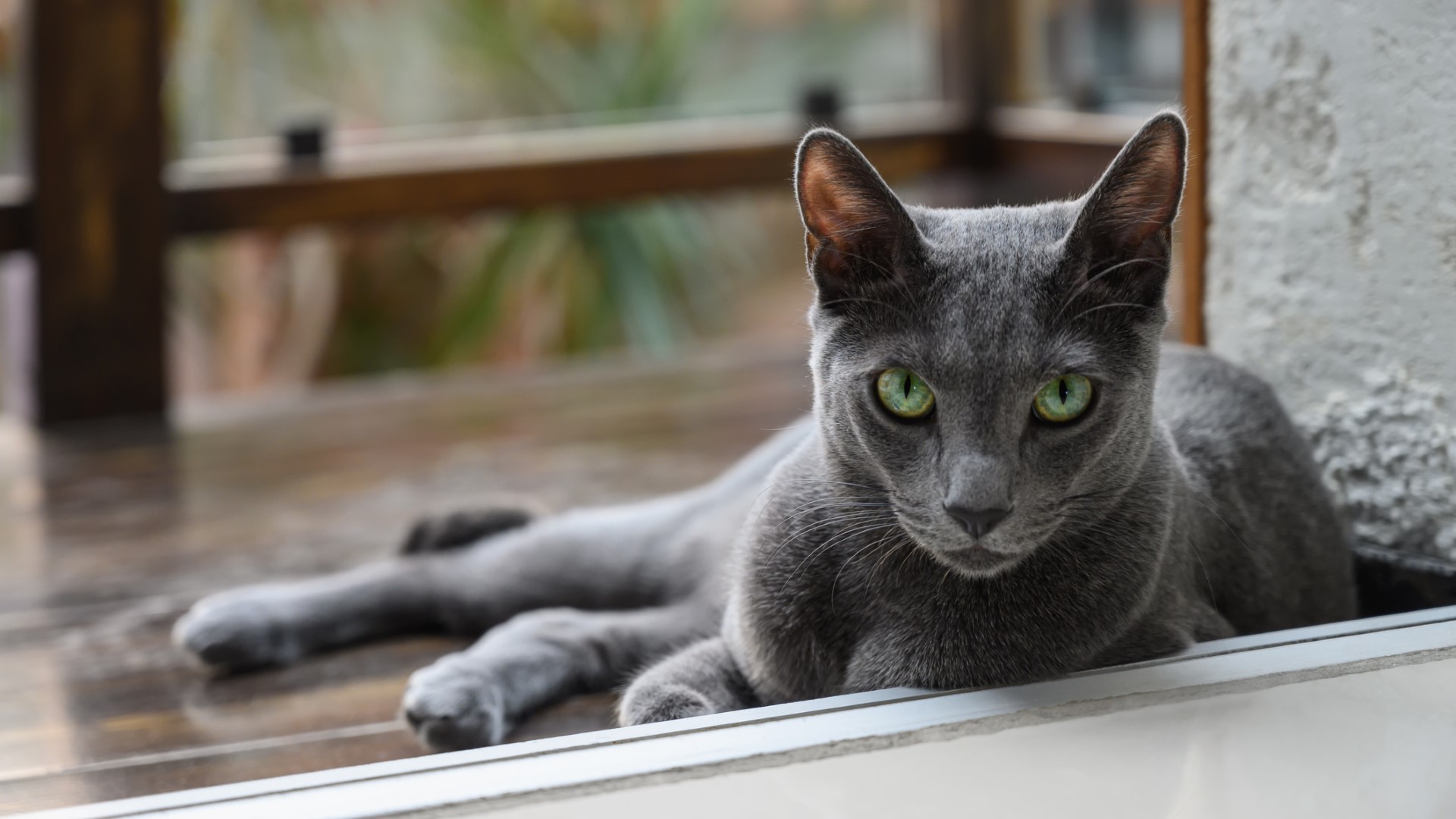
While there can be variation, Russian blue cats typically feature emerald green eyes. However, they are not born with this eye color. One fact about kittens is that they are all born with blue eyes.
Early in their development, most Russian blue kittens develop a yellow or golden eye color. Finally, when they reach around four to six months old, this yellow color typically changes into a striking emerald green. Less often, an adult Russian blue cat may develop golden, amber, or blue eyes.
9. Healthy adult Russian blues weigh 7-15 pounds
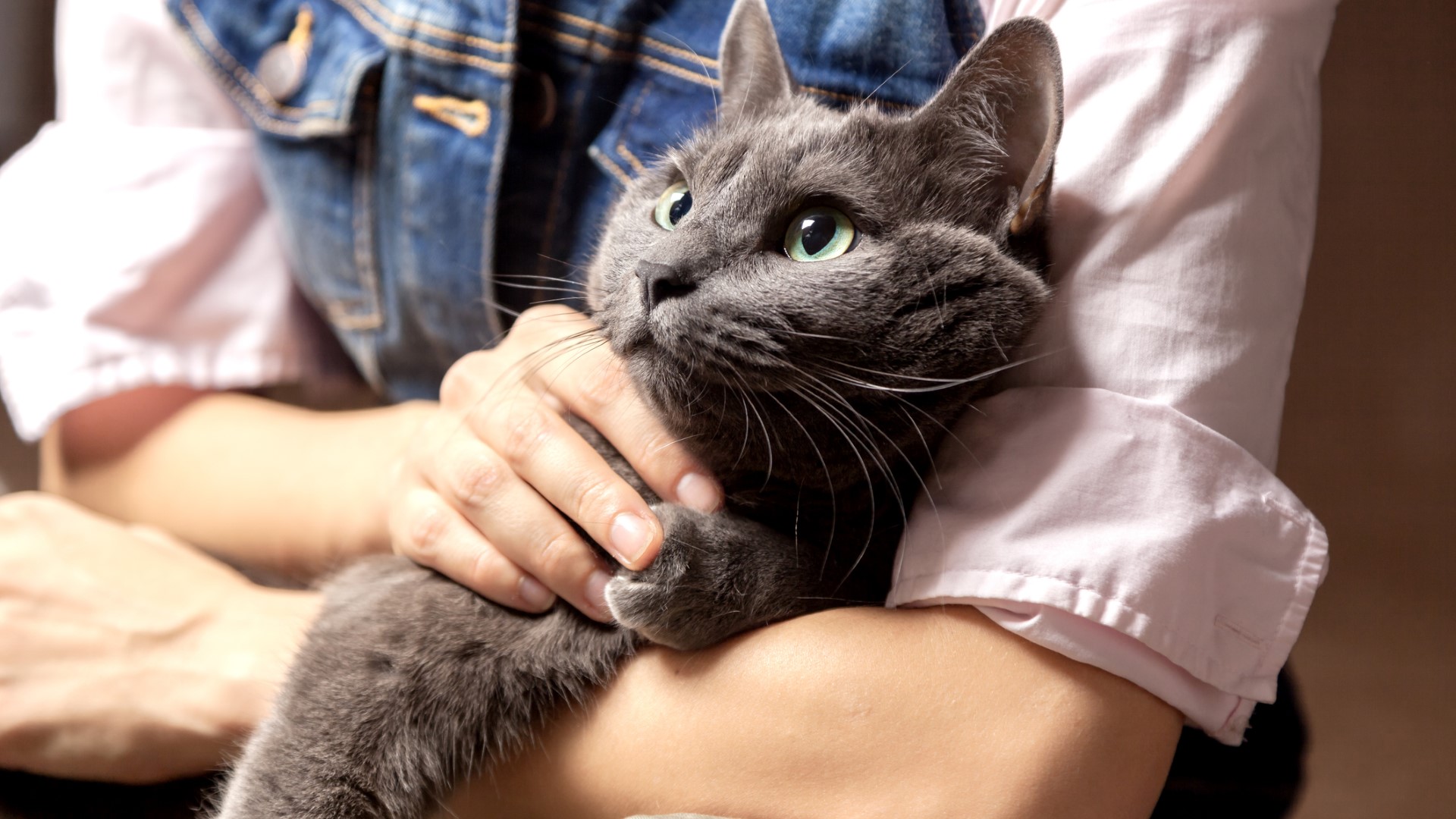
Healthy adult Russian blue cats typically weigh between seven and 13 pounds. Male Russian blues are usually a bit heftier than the females. This breed matures on the slower side and generally reaches its adult weight between 16 and 18 months.
With their thick, plush fur, it can be difficult to accurately estimate a Russian blue's weight. By bringing your cat to a yearly vet exam, you can ensure your kitty maintains a healthy weight.
10. They have relatively low grooming requirements
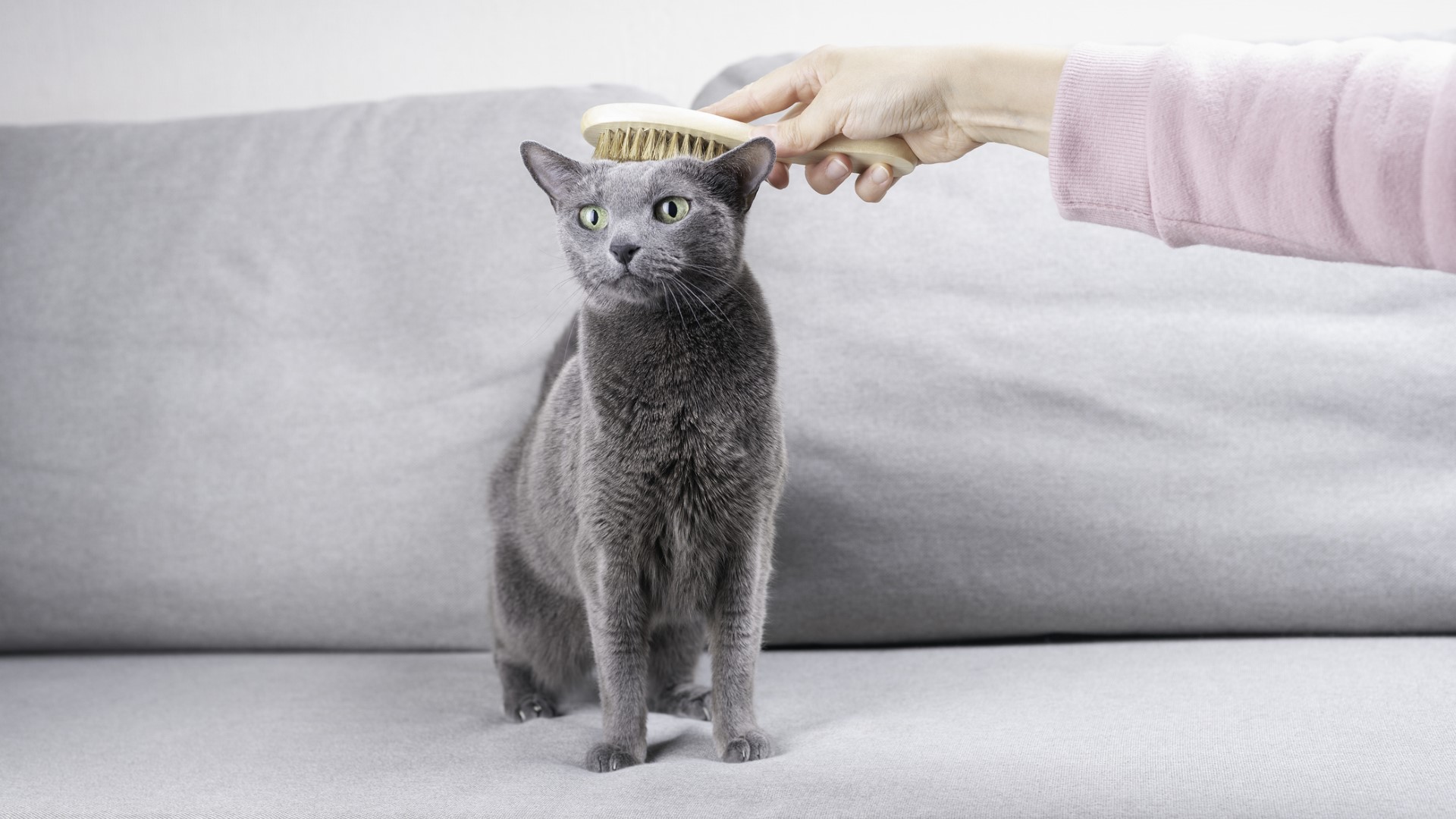
While Russian blue cats do have a thick double coat, their fur is short. Most cat guardians consider them to be low-shedding. For these kitties, we recommend brushing once per week to remove excess hair and keep their coats velvety soft.
If your cat is a bit nervous or averse to brushing sessions, you can start pairing the brush with high-value treats to build a positive association. At first, you may start with pairing the sight of the brush with some of the best cat treats, and then work up to placing the brush against your cat's fur, and finally begin short grooming sessions all while feeding your Russian blue little pieces of their favorite treats.
11. They have few genetic health conditions
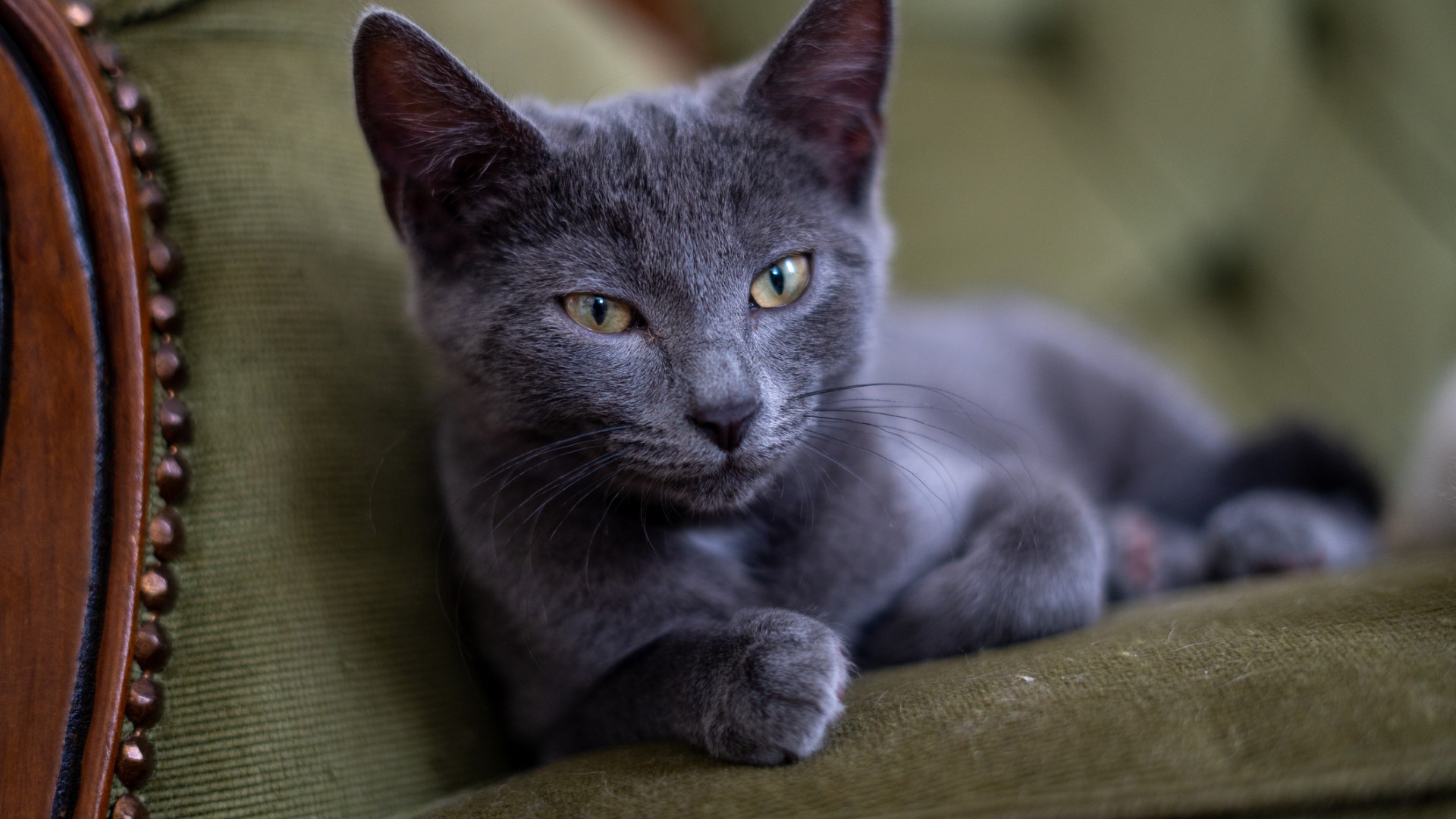
Compared to mixed breeds, purebred cats are typically more at risk of genetic health conditions due to lower genetic diversity. However, the Russian blue is one of the healthiest purebred cats, in part due to the breed developing naturally as a result of their environment rather than selective breeding by humans.
Still, Russian blues are commonly affected by some genetic health conditions including hereditary cataracts, thyroid disease, polycystic kidney disease, and progressive retinal atrophy (PRA).
12. They are affectionate, but not clingy

The Russian blue cat is known for being sweet, gentle, and affectionate towards their family without being clingy or overly demanding of attention. They often enjoy curling up on the lap of trusted people, but may not be initially affectionate with strangers.
While they are a social breed, the Russian blue typically displays a balance of affection and independence. It's common for this breed to enjoy family time while also being perfectly content to curl up in one of the best cat beds and snooze on their own.
13. Russian blues are highly intelligent
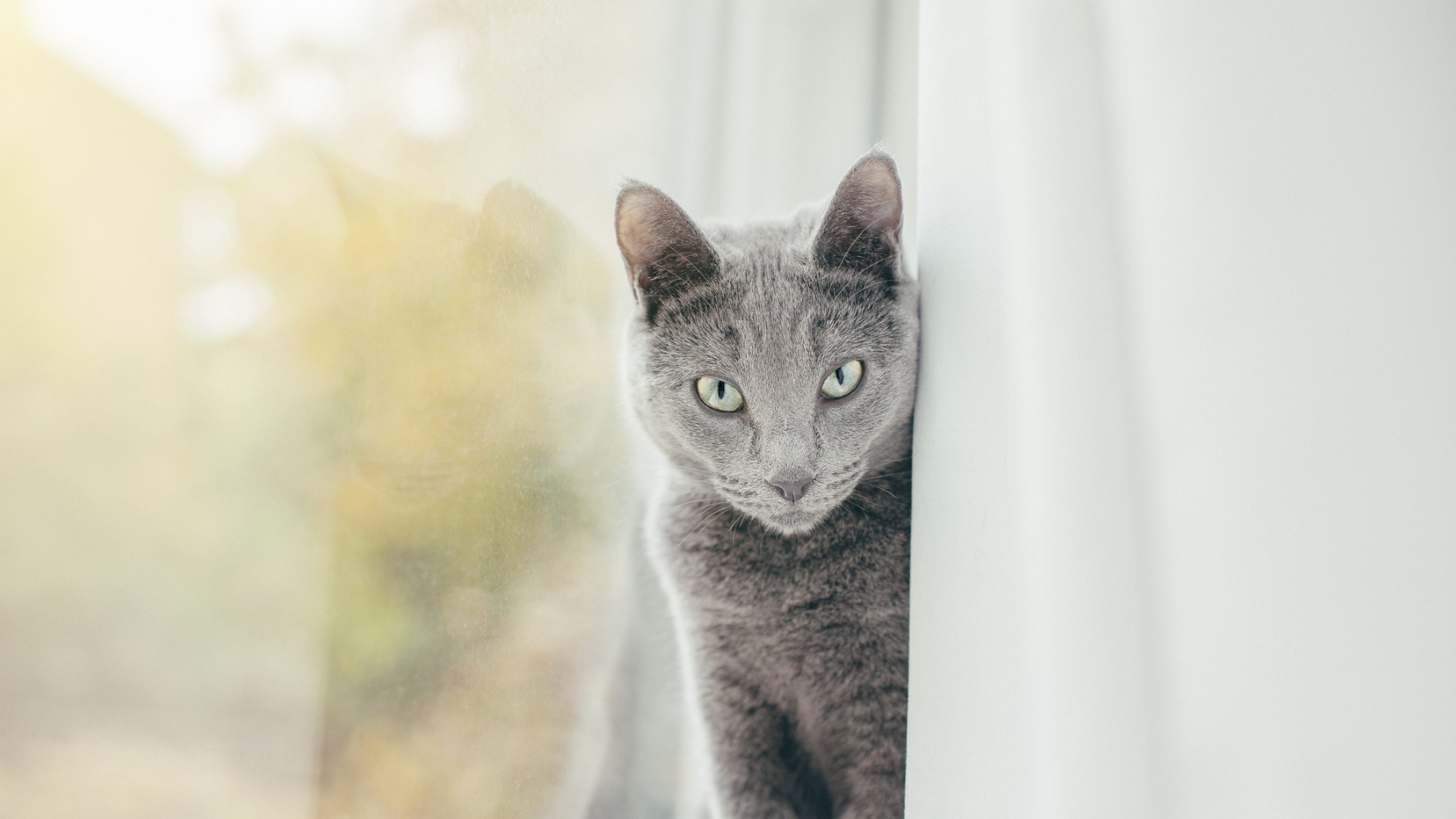
Curious and intelligent, the Russian blue cat requires consistent mental enrichment to be content. They typically respond well to learning cues with positive reinforcement and often enjoy window-watching.
Having some of the best interactive cat toys on hand will help keep your Russian blue kitty engaged, happy, and out of mischief. This intelligent breed prefers to quietly observe new environments before exploring so it's important to give them time and space to adjust to novel situations, pets, and people.
14. They generally interact well with calm children
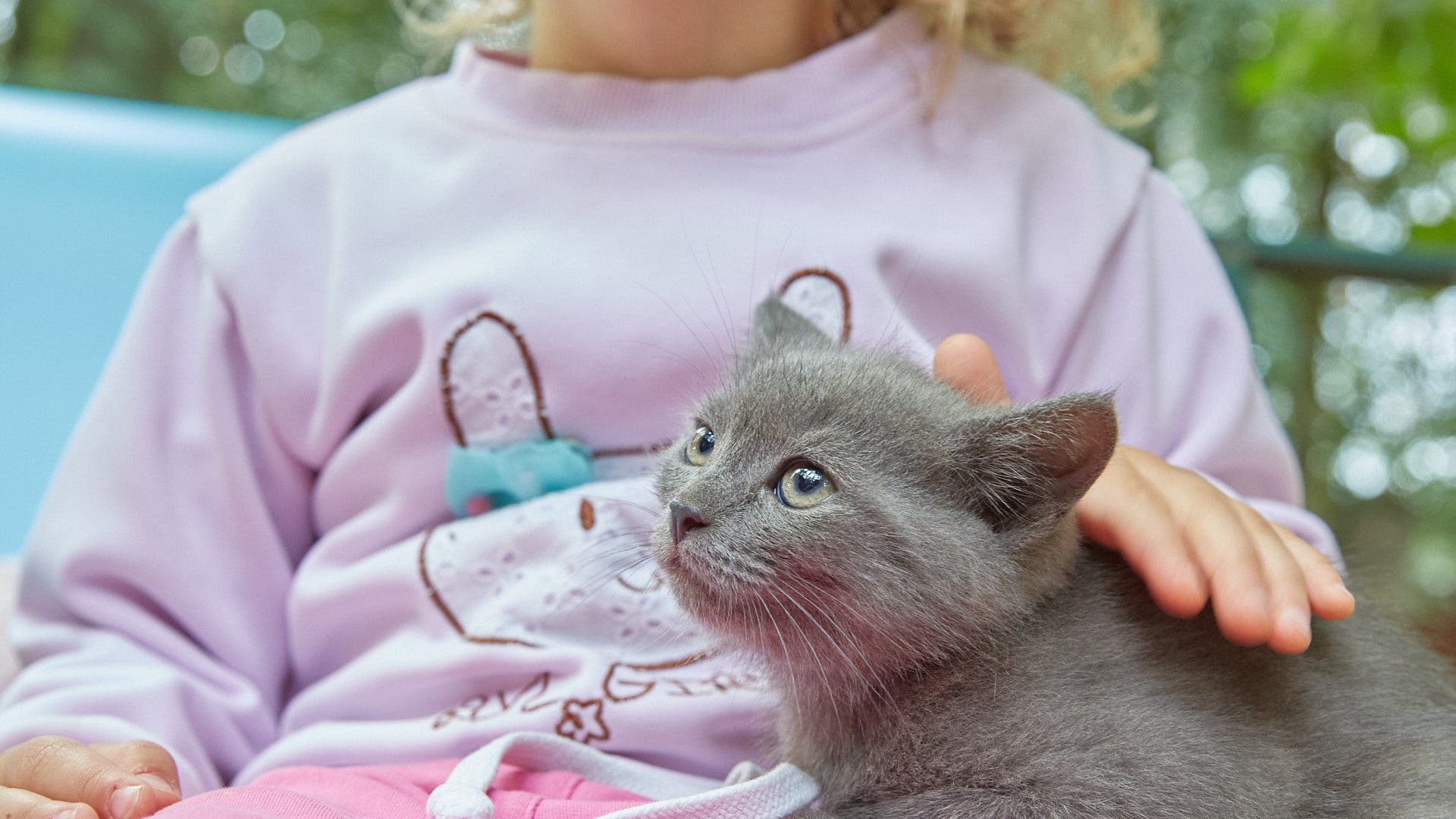
If you have kiddos in your home, you may be wondering if a Russian blue is the right breed for your household. While Russian blue cats are known for being gentle and affectionate, they are also sensitive and a bit cautious.
As such, they can be easily overwhelmed by rambunctious children. If you have young kids and are planning on welcoming a Russian blue kitty into your home, consider whether your household's energy level will mesh well with this breed.
15. Russian blues typically get along well with other pets

In general, Russian blues are known for peacefully cohabitating with other pets, including cat-friendly dogs. They aren't typically prone to territorialism and often enjoy sharing a home with other animal companions.
If you want to be cautious when introducing a Russian blue cat to your other household pets, it's a good idea to initially keep the animals separated and instead only introduce their scents. You can do this by rubbing a rag or towel on your pet's fur and allowing the animals to process each other's scent before seeing one another.
16. Russian blues love to play
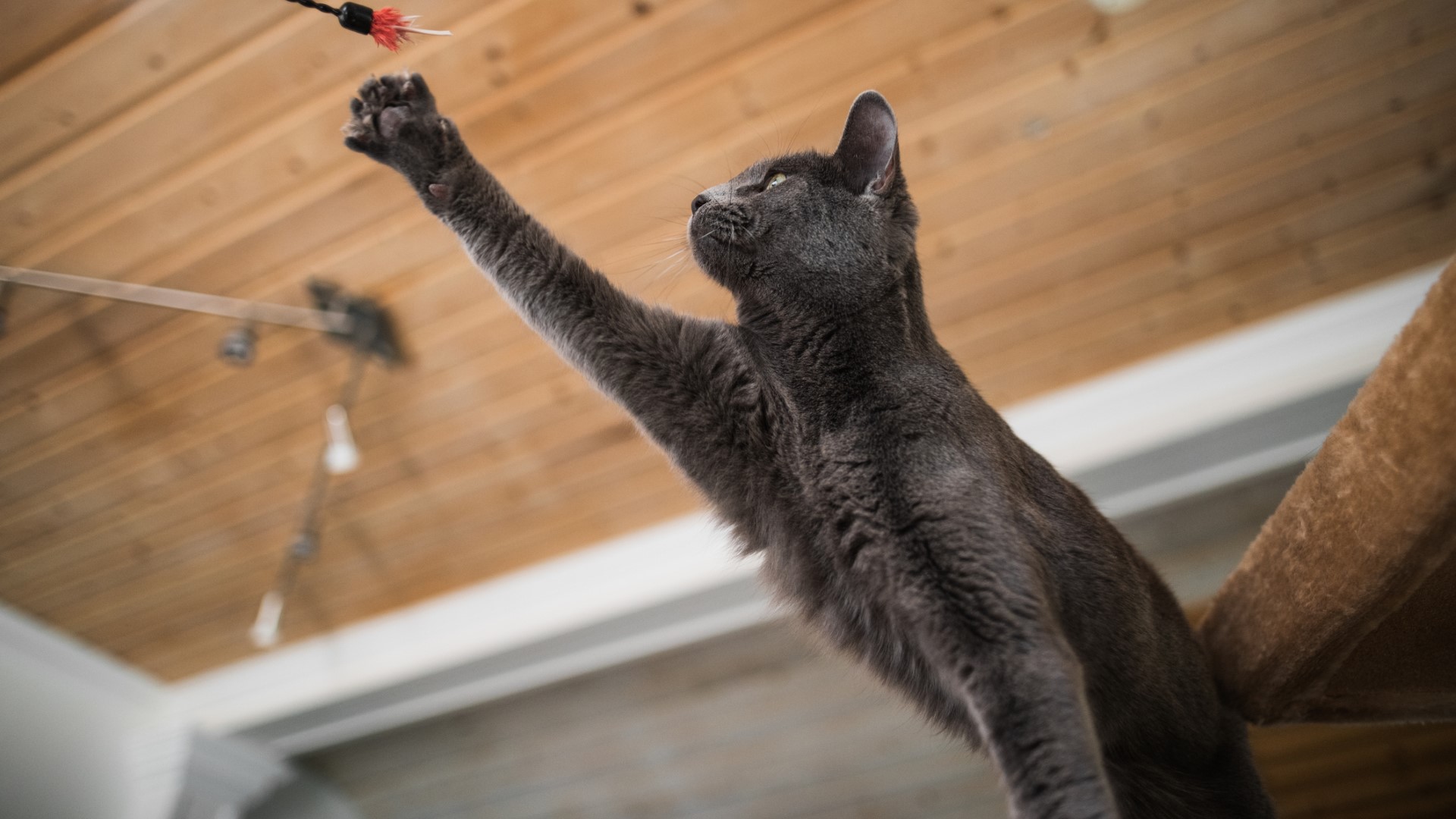
Once your Russian blue cat becomes comfortable in your home, you'll likely find that they enjoy playing. Many Russian blues even like to play fetch and may bring you a toy to throw. They're most likely to bring their toys to their favorite people, so consider the gesture a form of high praise by your Russian blue.
While this breed isn't particularly high energy, they do often continue exhibiting playfulness into adulthood, albeit to a more tempered extent.
17. They have a moderate energy level
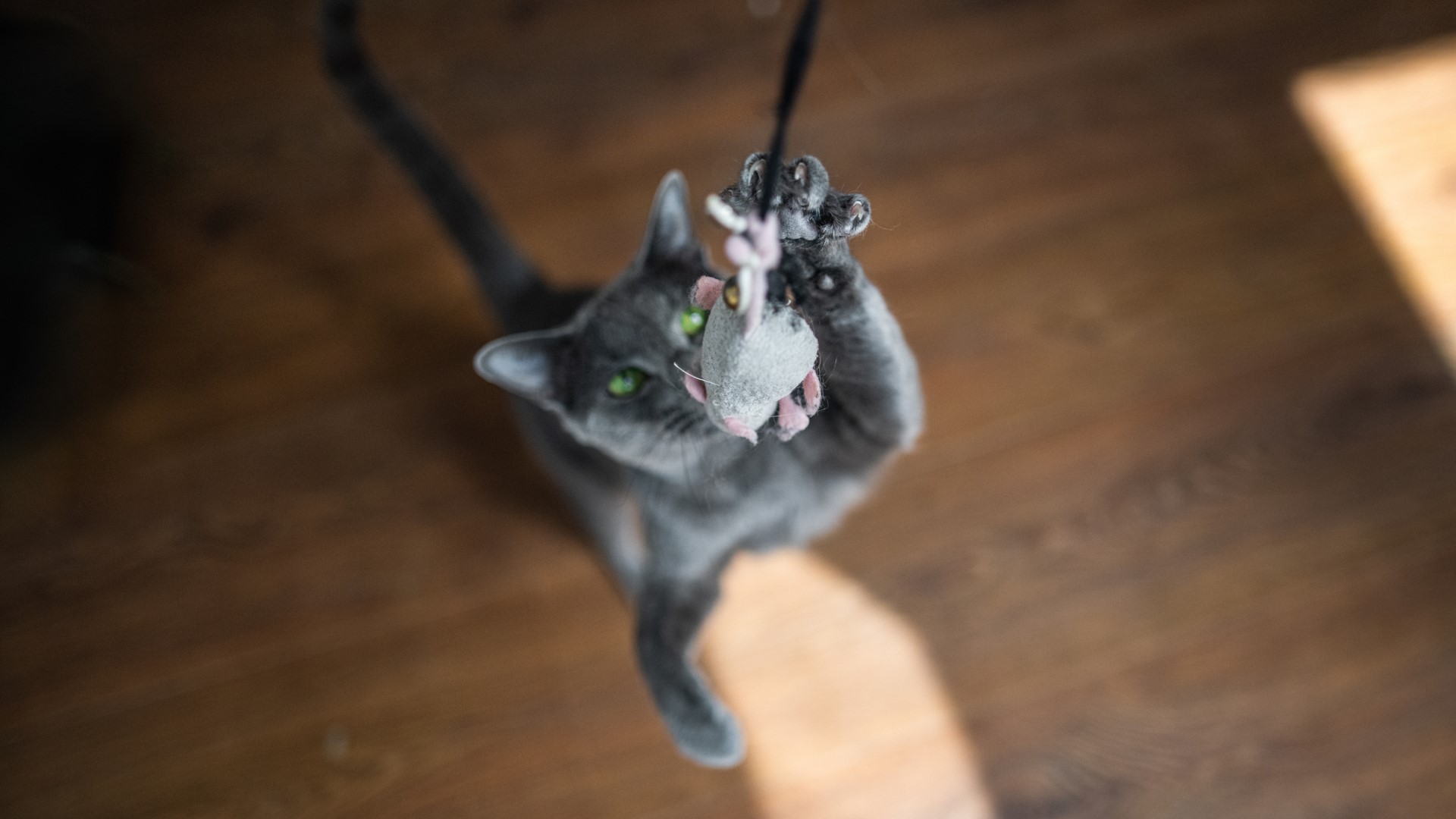
Russian blues are overall a well-balanced cat. They are affectionate, but not clingy, playful without being destructive, and generally have a moderate energy level. Russian blues are often content with a balanced mix of exercise and lazing about. Most Russian blues do well with about half an hour of high-energy exercise and play per day.
You may find your kitty to be more content throughout the day if you split this half-hour of intentional exercise up into two 15-minute sessions. These sessions can include throwing toys for your feline pal to fetch and using a feather pole to encourage them to run and leap.
18. Russian blues love to climb
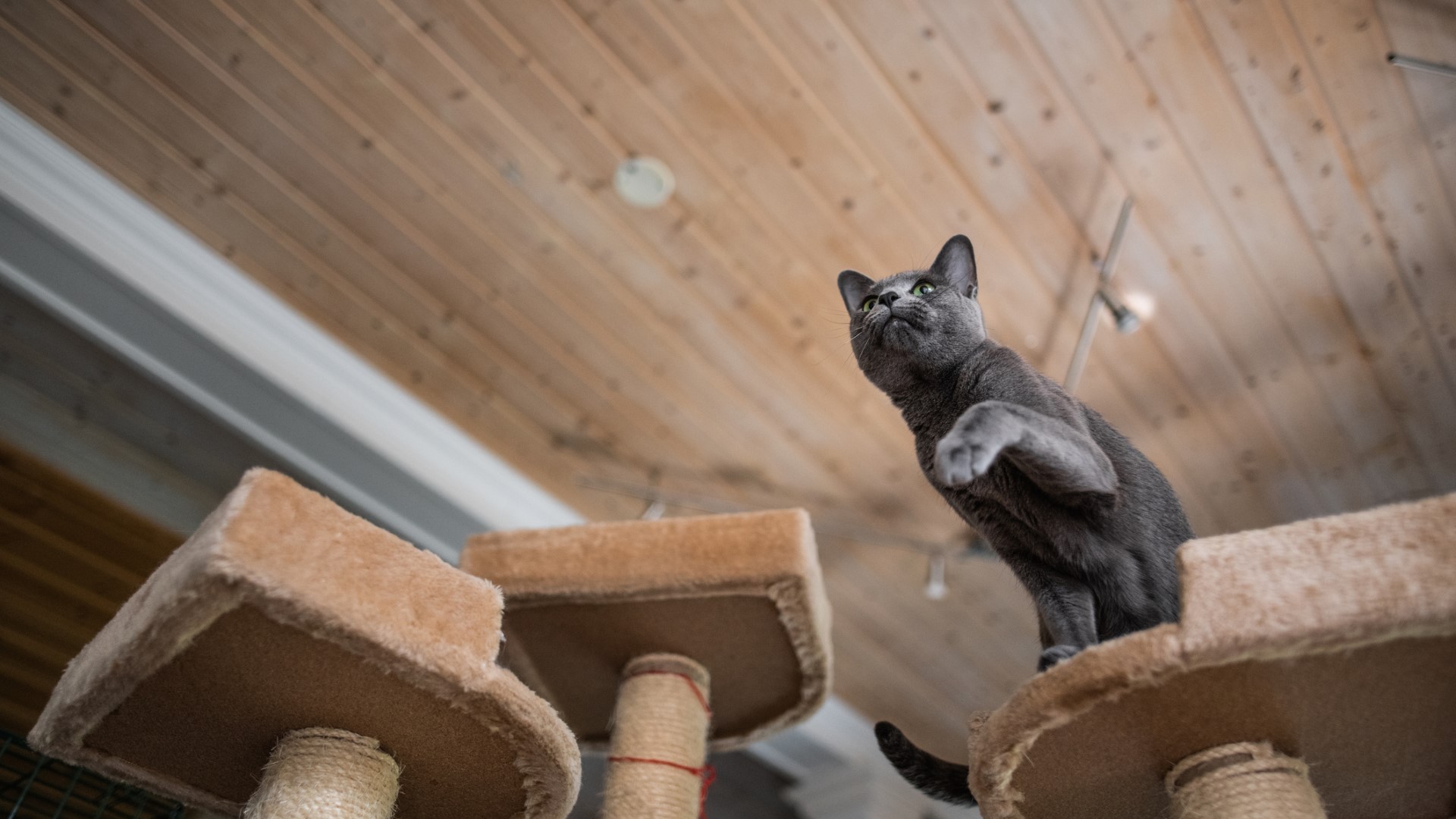
We highly recommend investing in some of the best cat trees and climbing platforms if you plan on adopting a Russian blue cat. This agile, graceful, and muscular breed loves to climb. They tend to enjoy both actively climbing and observing from the safety and comfort of their perches.
If you have dogs and kids in the home, providing climbing platforms is a great way to ensure your Russian blue has a quiet place of its own to enjoy and retreat to. It's also great fun to watch your kitty gracefully navigate an indoor climbing paradise.
19. They often like to cuddle with their favorite people
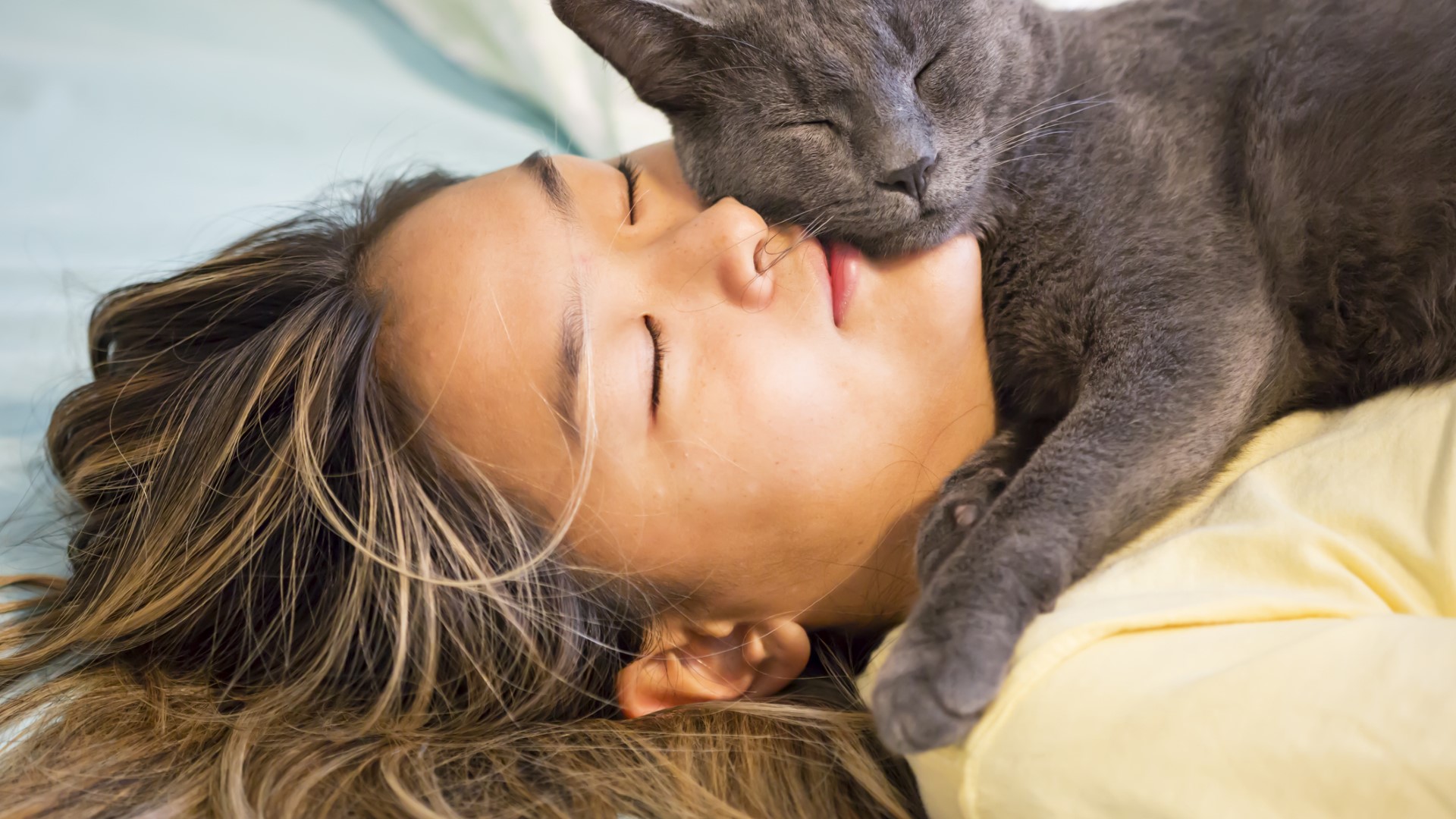
While your Russian blue is unlikely to snuggle up with a stranger, they do form very close bonds with their chosen people. Some Russian blues form this bond with all members of their household while others may bond super closely to only one person.
With these special people, Russian blues will often choose to cuddle up with and are often happy to be lap kitties. Even if you are your cat's favorite person, however, it's important to not try to force your kitty to snuggle if they are uncomfortable or just generally don't express their affection through snuggling.
20. Russian blues can be easily alarmed by loud or sudden sounds
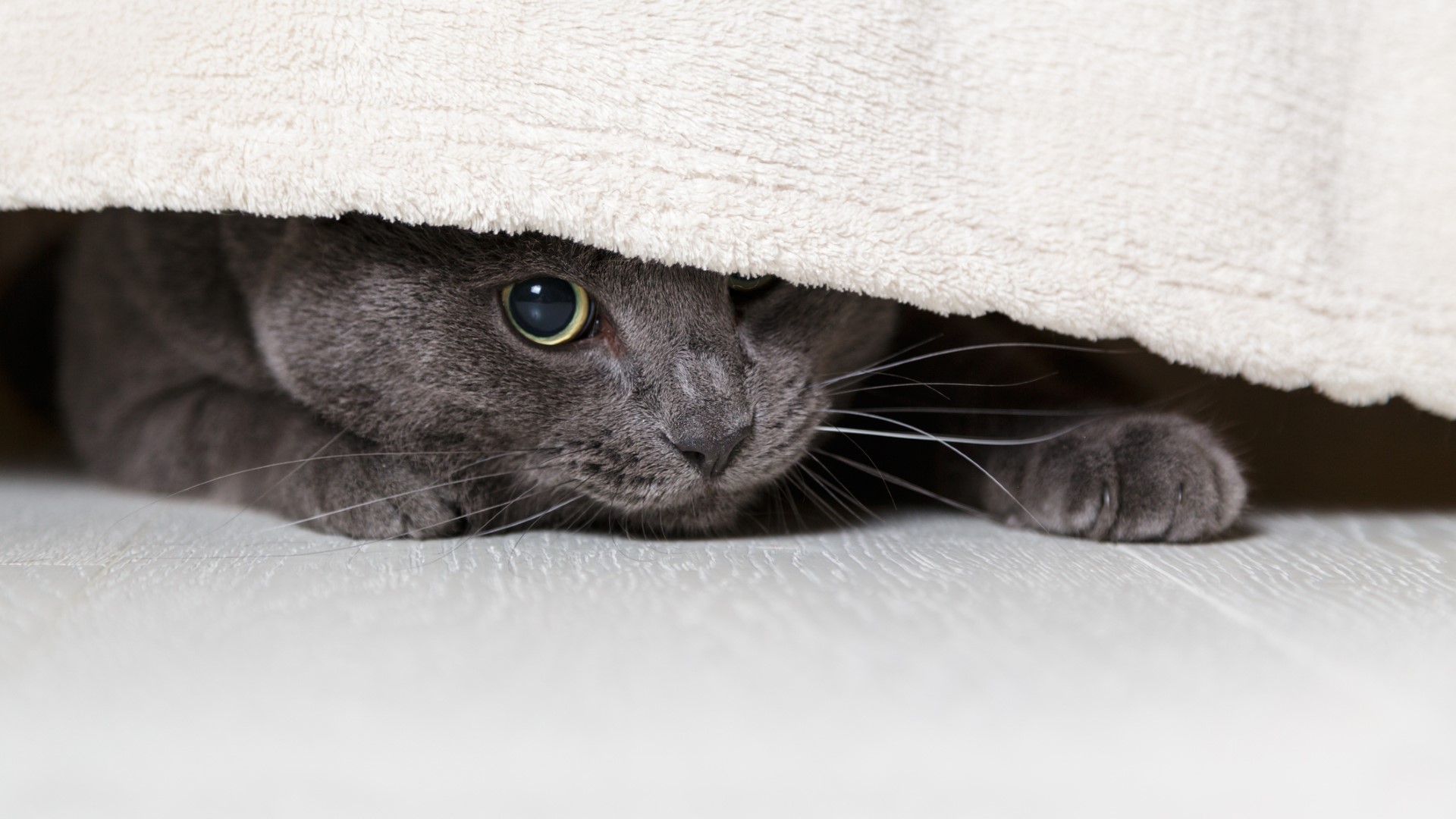
While any cat may jump at a sudden or loud noise, Russian blues are known for being a bit sound-sensitive. This is especially true for Russian blue cats who weren't well-socialized as kittens. If you're adopting an under-socialized adult Russian blue, you may notice a more pronounced cautious personality.
Consistently loud households are typically not the best fit for these sensitive felines. If you're adopting a Russian blue kitten, it's crucial to gently, positively, and incrementally introduce them to new sounds throughout their early socialization periods.
21. They enjoy cool climates
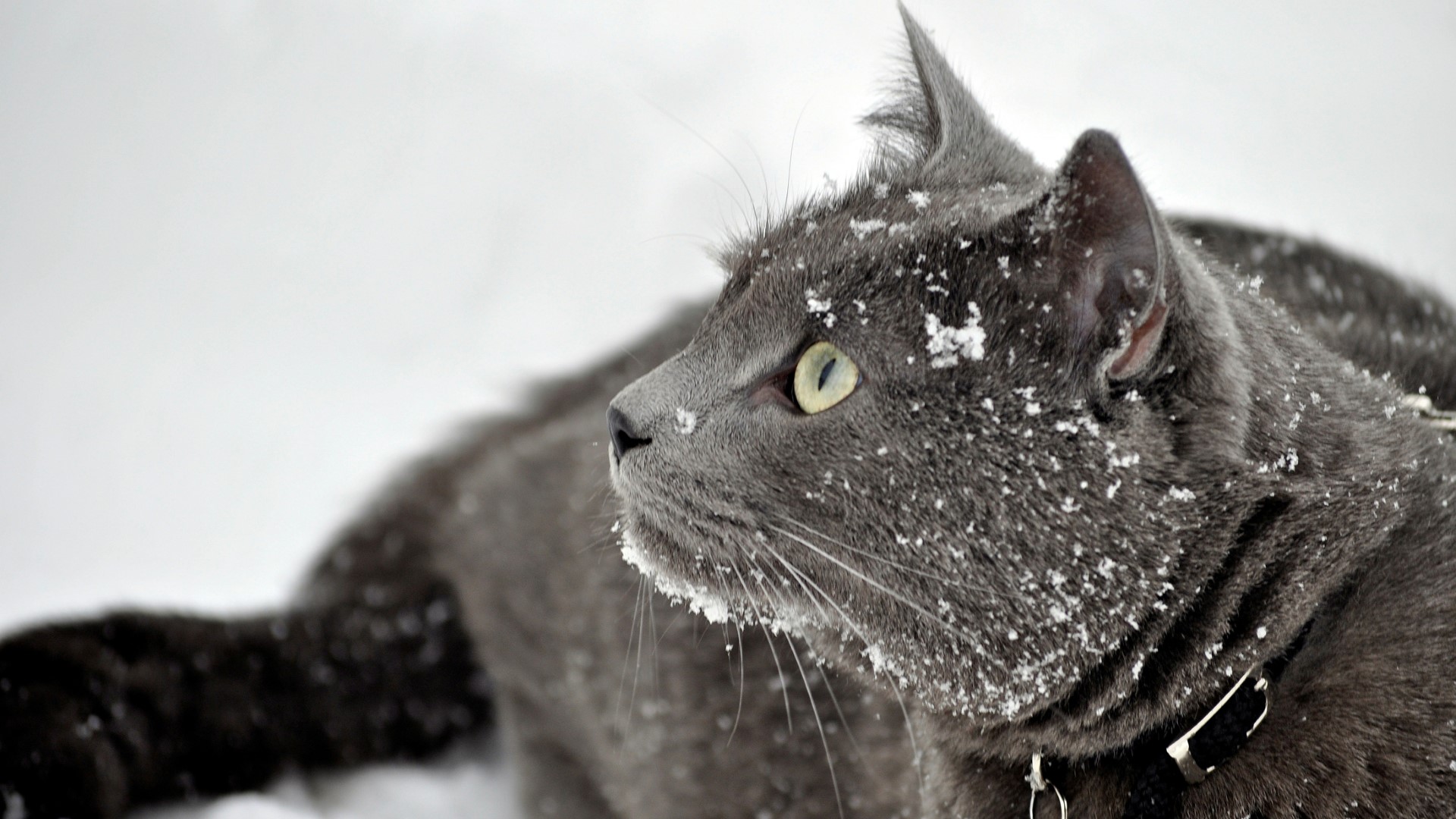
Russian blues are an excellent breed for those living in cool or cold climates. Originating from the northern regions of Russia, this breed is highly adapted to cold weather. Their thick double coat provides plenty of warmth during cold weather, and you may find that your Russian blue enjoys outdoor winter adventures. Conversely, many Russian blues aren't inclined to high-energy outdoor activities in hot weather.
If you have an outdoor Russian blue in a warm climate, it's important to provide them with a safe and comfortable place to relax in the shade with plenty of fresh, clean water.
22. Russian blues may be initially shy with strangers
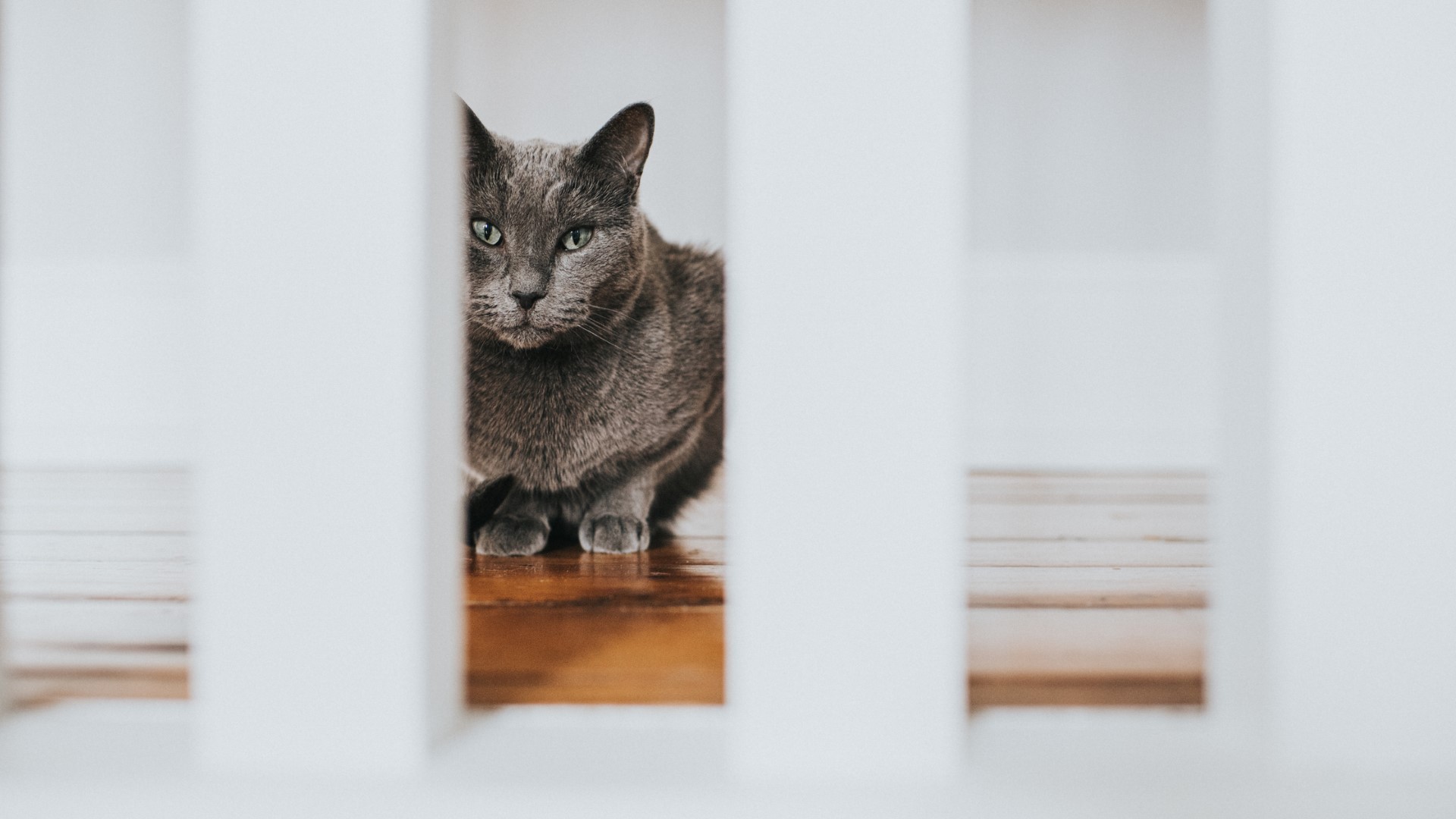
While the Russian blue cat is known for being gentle and sweet, they are often initially cautious and a bit reserved with strangers. To help your Russian blue feel comfortable around new people, it's important to allow them the space and time that they need to process new individuals. This may look like your kitty watching someone from the safety of their perch or sniffing them for a few seconds before retreating, and then repeating the cycle.
Pairing some of the cat treats with the arrival of a new person will also help your Russian blue form positive associations with guests.
23. They enjoy window watching

If you have an indoor-only Russian blue cat, it's a good idea to set up some great window-watching perches for them. These cats tend to love being outside, so making sure they have a great view can help them feel more content.
Ideally, you'll want to set them up for window-watching a natural setting where they can watch birds hopping on tree branches and squirrels scampering throughout the canopy. If the window doesn't have a nice sill for your Russian blue to sit on, you can install a platform or cat tree next to the window for easy access.
24. They aren't a common breed
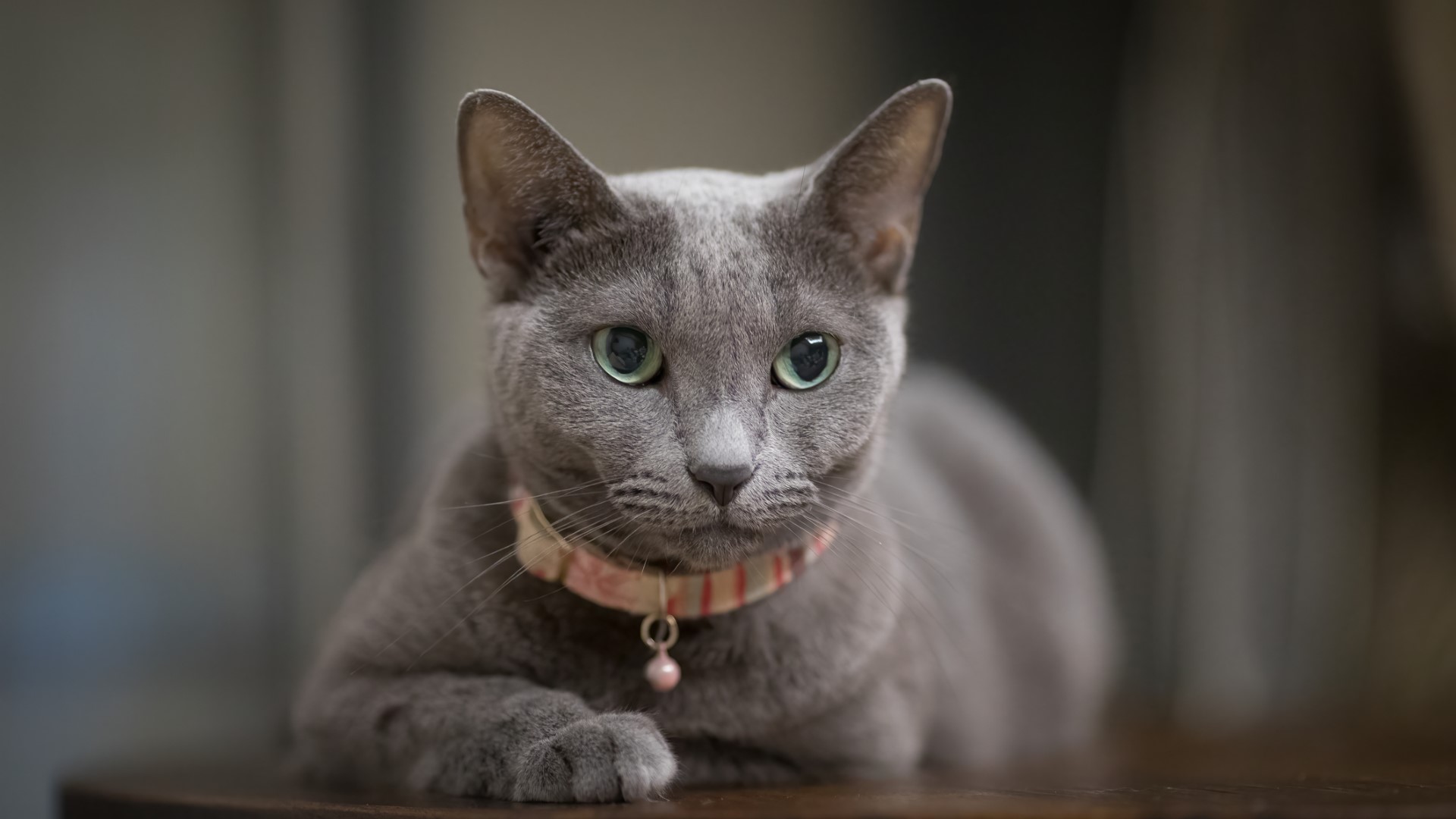
While Russian blues aren't rare, they aren't a particularly common breed either, especially in the U.S. and Canada. If you have your heart set on adopting a Russian blue and want to adopt from a shelter or rescue, you may need to search for breed-specific or purebred cat rescues to find a Russian blue.
You may also look for cats that appear to be a Russian blue mixed breed. Especially in countries like the U.S. where shelters are overflowing with animals in need of loving homes, you can usually find the breed you're looking for with a bit of patience and perseverance.
25. Russian blues are fairly chatty
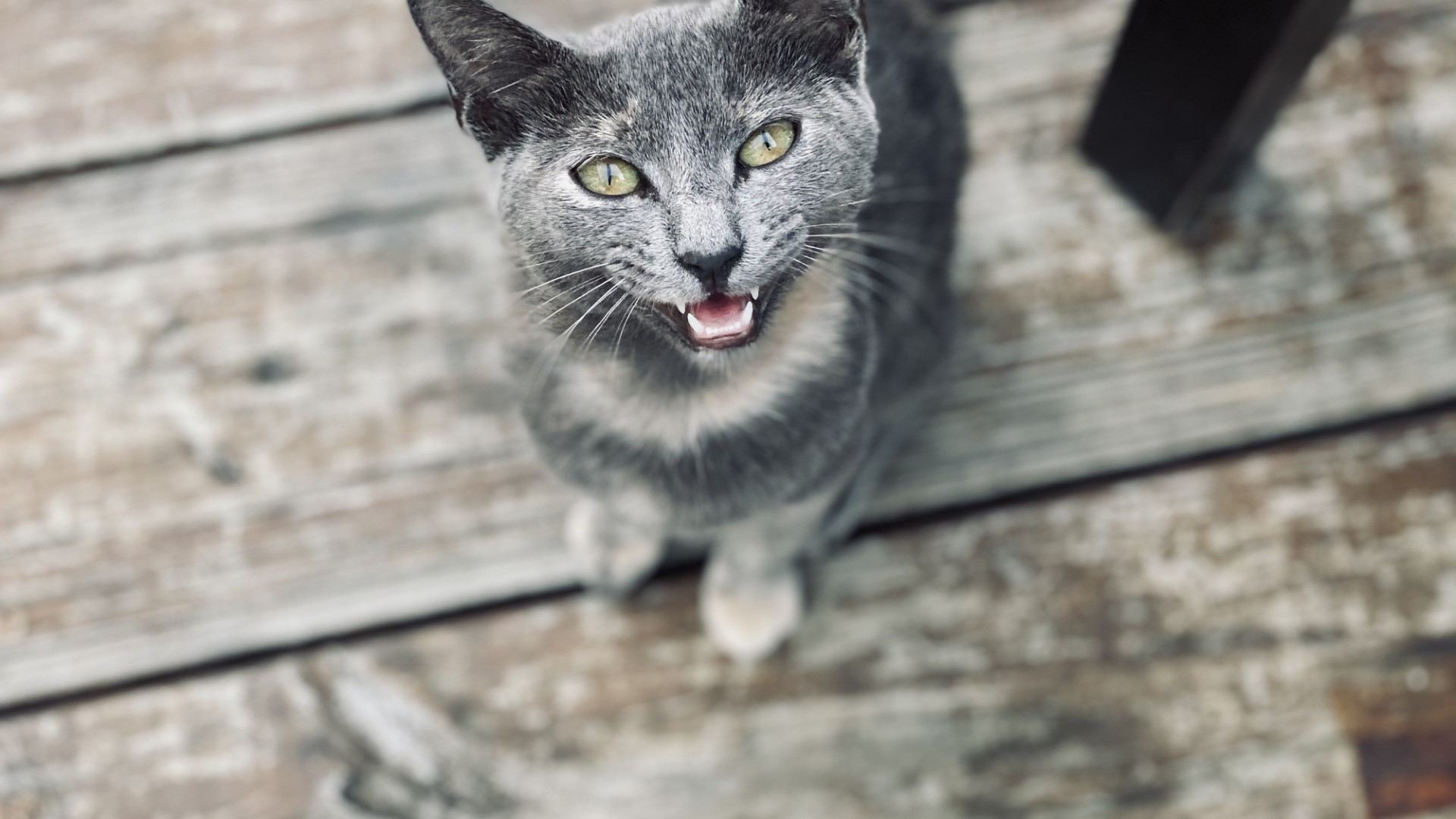
If you enjoy the chattiness of some kitties, a Russian blue may be a great feline companion. These cats are known for being moderately vocal. They often happily vocalize at their favorite people or to signal a desire for attention.
This breed will typically only become excessively vocal if their needs aren't being met, so it's important to provide your Russian blue cat with consistent social, mental, and physical enrichment. They'll also often meow at dinner time, and will be quick to let you know if you're a few minutes late with their chow.
26. They may adapt well to wearing a harness
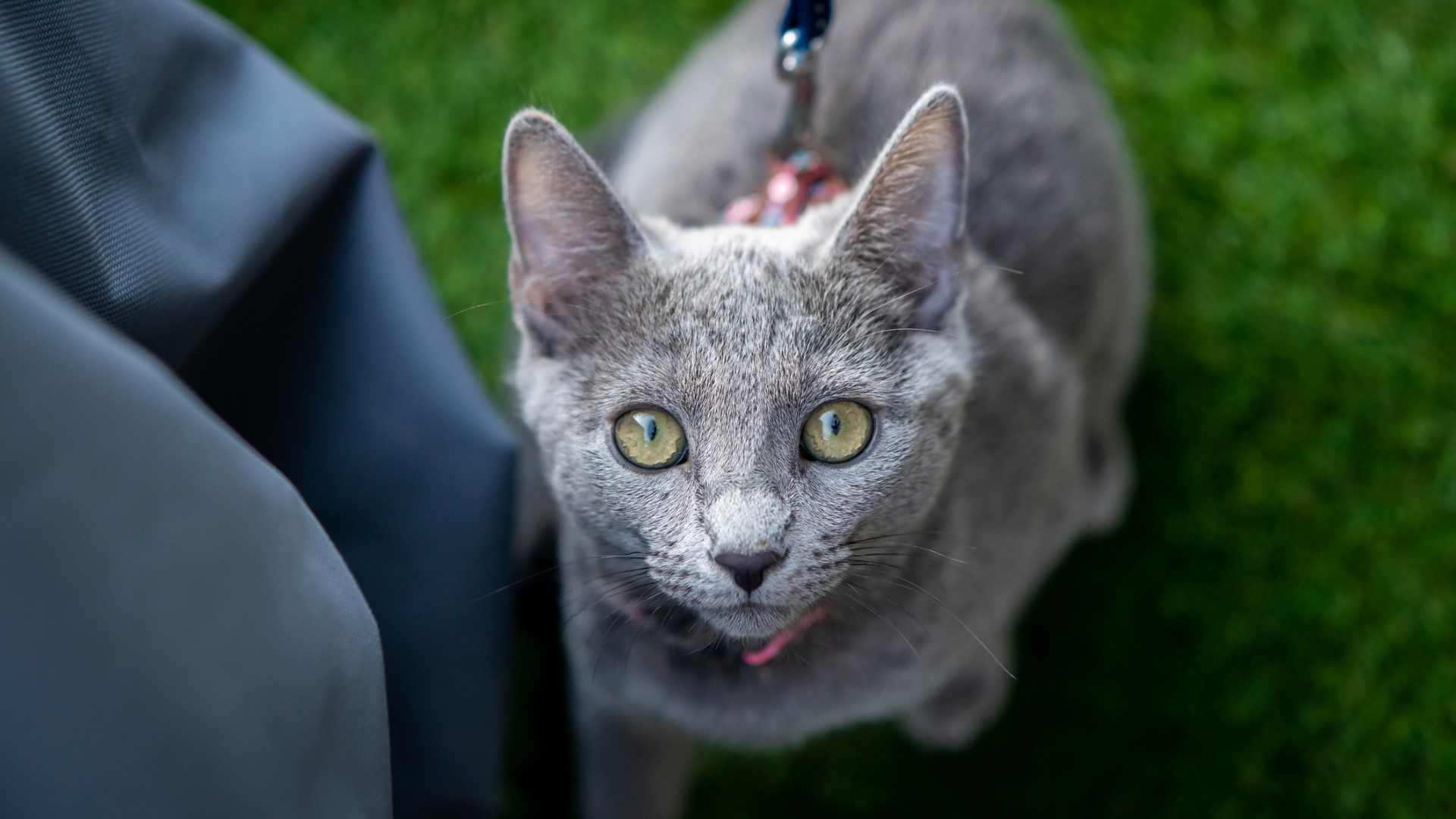
By using gentle, incremental steps and positive reinforcement, you may be able to help your Russian blue cat feel comfortable walking on a leash. These cats tend to love the outdoors but they can also be a bit skittish. So, teaching them to wear one of the best cat harnesses and to walk on a leash can help ensure your Russian blue kitty is safe while outdoors.
When teaching your cat to walk on a leash it's crucial to move at the pace of your kitty's comfort level and start in a familiar indoor setting. Using high-value treats during training sessions can help build positive associations and can be used to teach your kitty to step into their harness. As they become more comfortable and confident, you can transition to short walks in a quiet, safe outdoor setting. As your cat feels more and more comfortable, you may be able to take them on hikes!
27. Russian blues are generally not destructive

Some cats just love getting into mischief, but generally speaking, Russian blues are typically not destructive. As long as their physical, mental, and social enrichment needs are met, these kitties are usually quite mild-mannered.
If you find that your Russian blue cat is displaying destructive behaviors, it's important to assess if there are any unfulfilled enrichment needs. They may also have an underlying medical condition that is causing a behavior change. So, when in doubt, it's always a good idea to consult a vet and a certified, reputable, and ethical behaviorist.
28. They're a relatively low-allergy breed

While no cat is truly hypoallergenic, the Russian blue is one of the best cat breed choices for folks with allergies. Even though they have a thick double coat, their hair is short and surprisingly low-shedding.
Additionally, compared to most other cat breeds, Russian blues are thought to contain comparatively low amounts of the glycoprotein Fel d 1, which, according to the journal Allergy, Asthma & Clinical Immunology, is a major source of indoor allergens.
29. Russian blues are fairly independent

If you like the idea of having a feline friend who enjoys cuddling and playing, but who is also unlikely to be your second shadow, then a Russian blue may be an excellent breed choice. While these kitties are known for being quite loving, they also tend to be fairly independent and not highly prone to developing separation anxiety. And while they can be independent, they're rarely aloof when around their favorite people.
30. They're curious

It's no surprise that a kitty as intelligent as the Russian blue would also be highly curious. These cats thrive on mental enrichment. Once they're comfortable, they love to explore and test out their environment. Hiding toys throughout the house can be a great way to help safely satisfy their curiosity. You can also stuff treats in toys and inside cat houses for them to find. Or try out one of the best cat puzzle feeders.
While they love to explore, their simultaneous somewhat cautious nature usually means Russian blues are unlikely to let their curiosity get them into too much trouble.
31. They can quickly learn new cues

According to the Humane Society of the Huron Valley, reward-based training is the best way to help teach your kitty new skills and cues, while punishment-based training can be harmful and damage your relationship. By using treats, play, and praise, you and your Russian blue cat can have a blast learning together.
These smart kitties are quite easy to train using positive reinforcement and play-based learning. With a bit of knowledge in ethical and science-based training and some delicious treats, you can teach your Russian blue a whole host of fun and practical cues, such as "sit", "wait", and "paw".
32. Russian blues are athletic
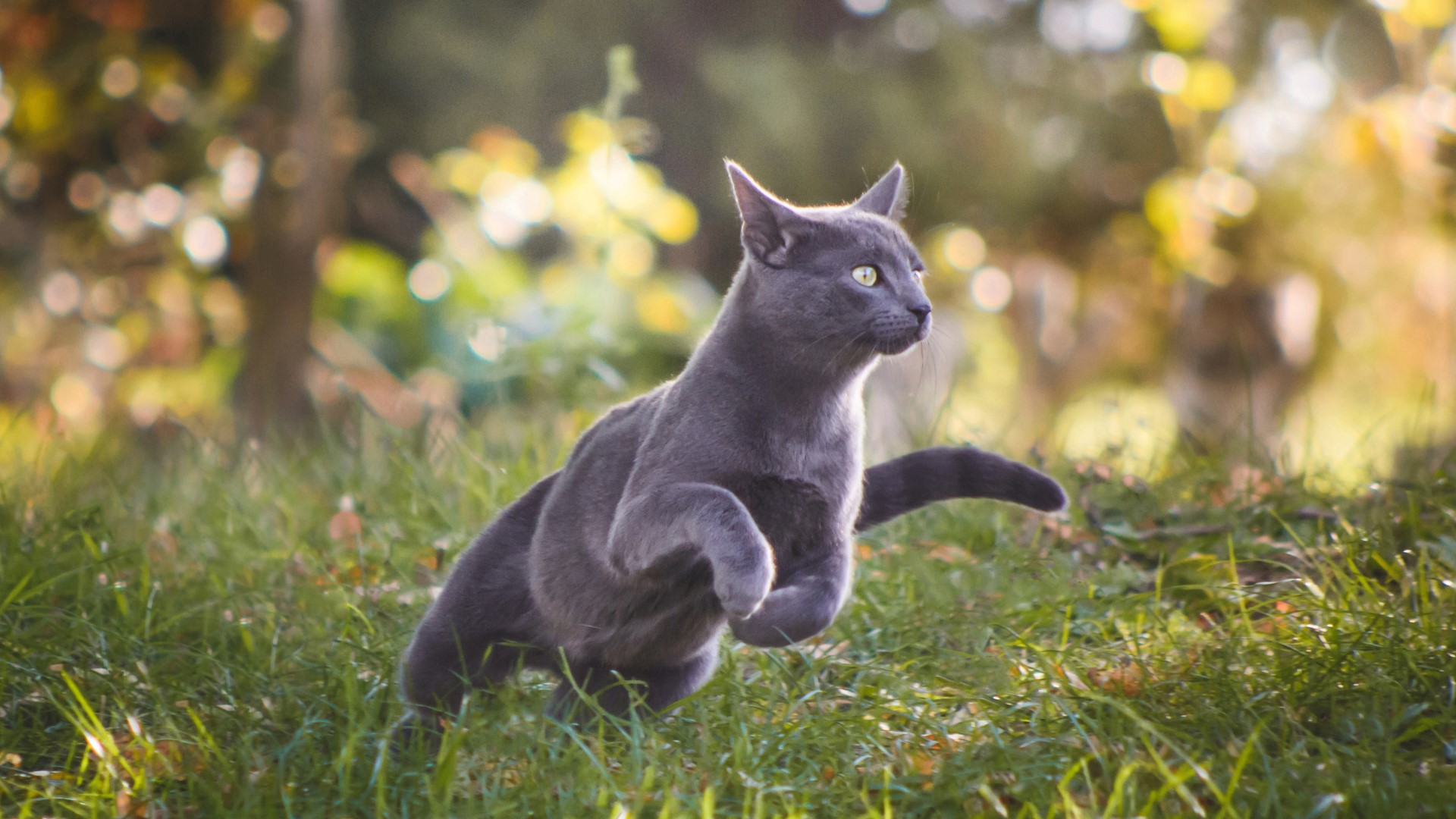
With their lean, graceful, and muscular build and moderate energy levels, Russian blues are quite athletic kitties. Even though they're not notably high-energy, it's important to provide this breed with plenty of opportunities to flex their athletic nature.
They often enjoy chasing toys, leaping, climbing, and going for walks, especially in quiet and natural settings. If you work away from home, stocking up on some interactive cat toys will help keep this athletic breed entertained and exercising while you're away.







